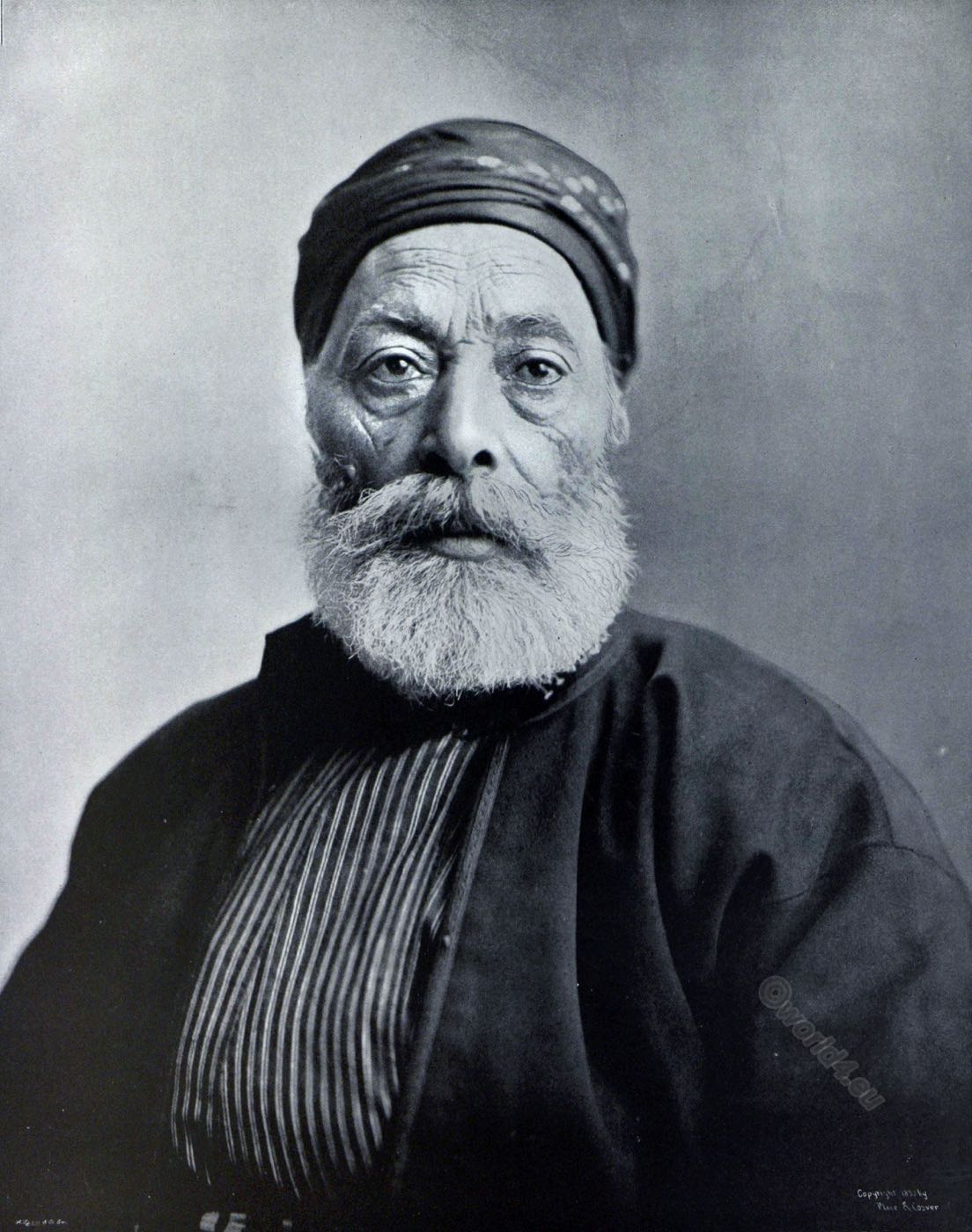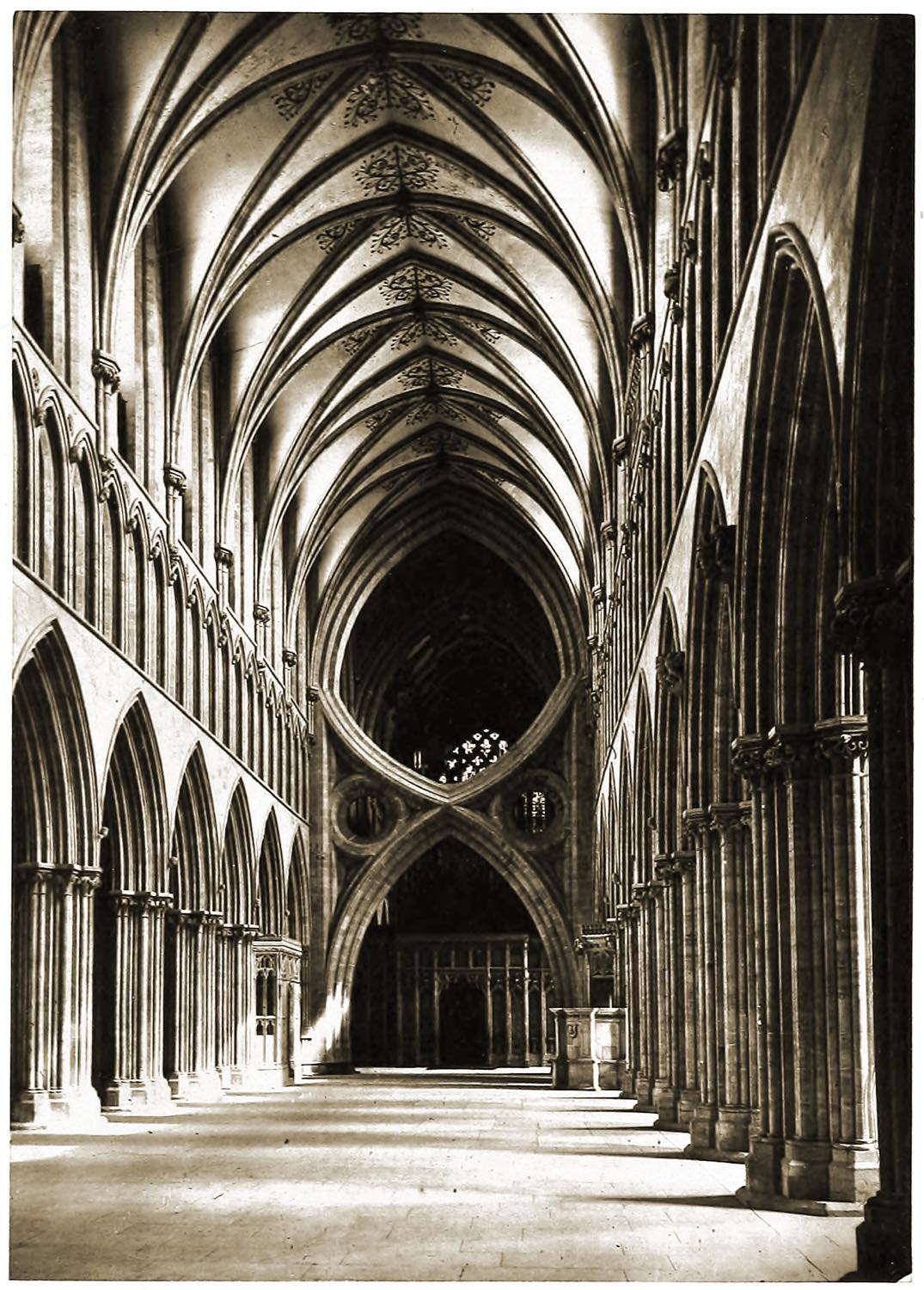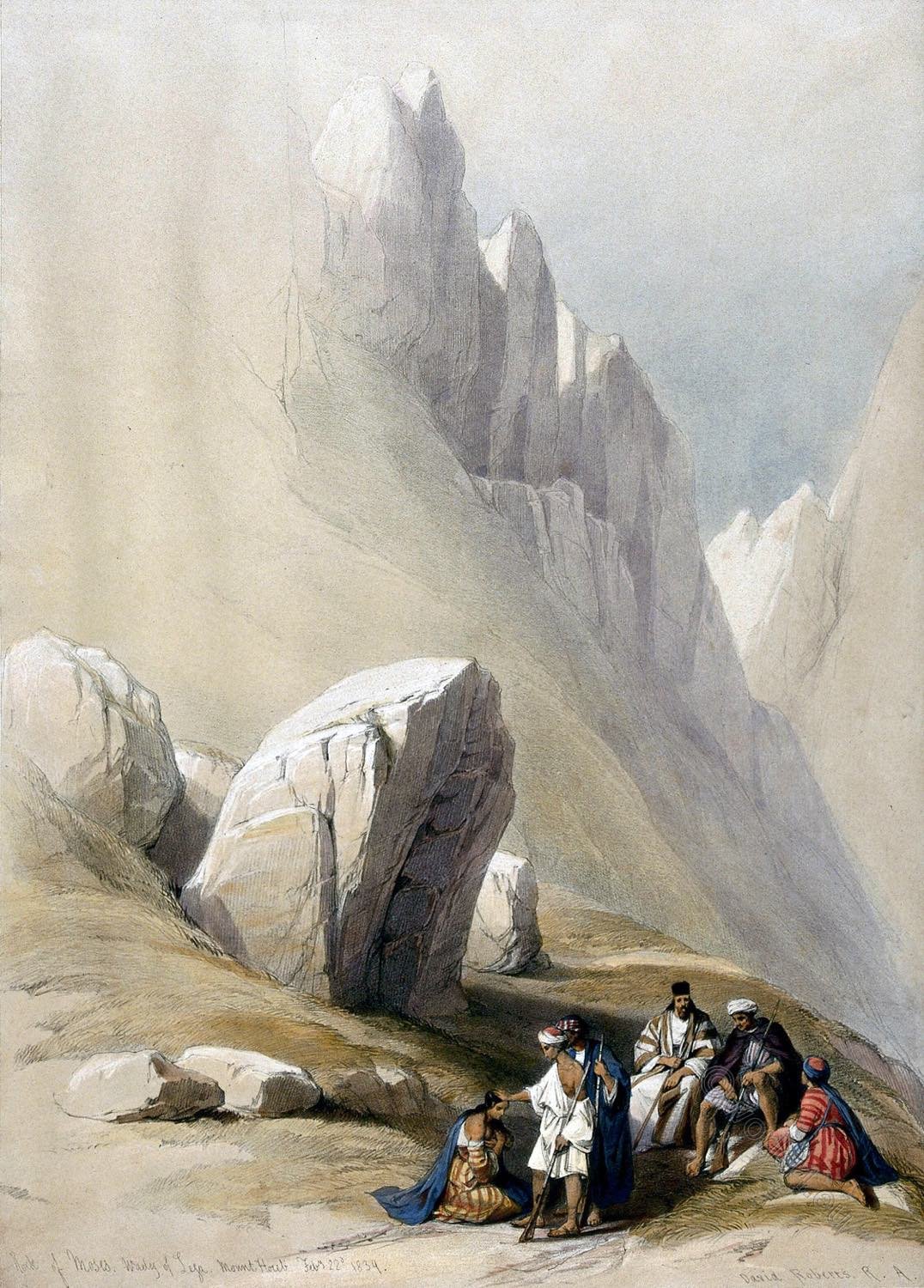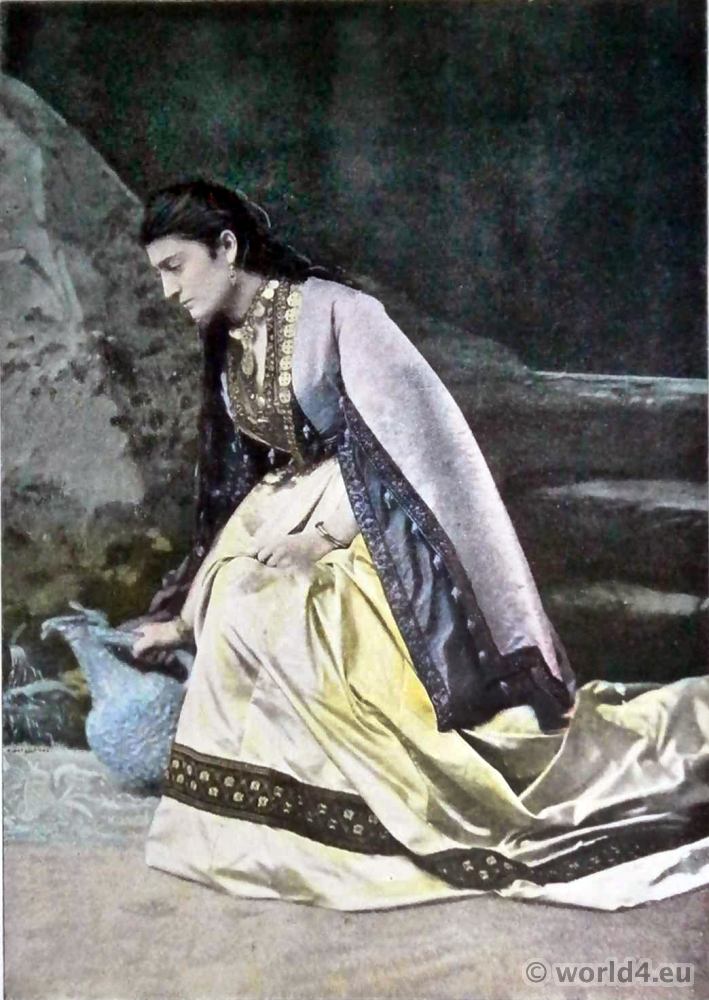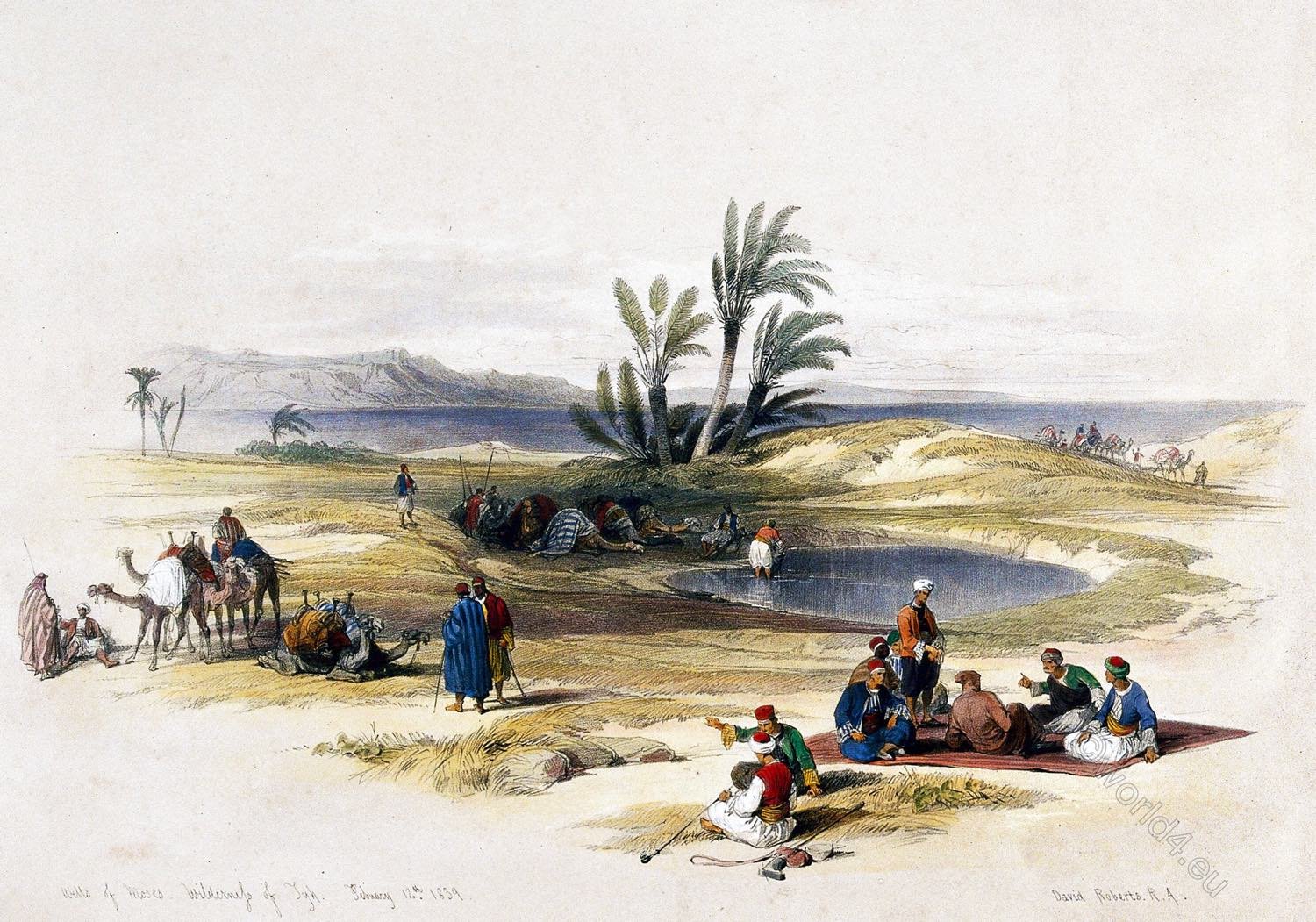
YUN MUSA, THE WELLS OF MOSES. WILDERNESS OF TYH
by David Roberts
These Fountains lie on the East side of the Gulf of Suez, near the shore; and are close to the spot where the Israelites (traditionally) reached the coast, after the miraculous passage of the Red Sea.
The Wells vary in number, in the accounts of travelers generally from seven to ten, or even up to fifteen; they are probably subject to change from some the waters escape, or they are filled up, and others are again excavated. The water is brackish, a taste to which habit or necessity can alone reconcile the traveller. About twenty stunted palm-trees, or palm-bushes, grow around in the sand.
A little barley is irrigated from some of the Fountains, which gives the spot a peculiar value in the eyes of Suez; it being the only effort of cultivation in the neighborhood. Near the Fountains is a low mound of fragments of tiles and pottery with some foundations, indicating the site of a former village. 1)
But the true interest in the whole shore arises from its having been traversed by the host of Israel. At every halt of the multitude, water must have been of the first importance.
Its supply in such an exigency must have been wholly miraculous. The natural supply is utterly impossible. A single caravan, perhaps a single camel, would now exhaust the Fountains, which, under the rod of Moses, supplied, from day to day, the thirst of millions.
1) Biblical Researches,i. 99.
Source: The Holy Land, Syria, Idumea, Arabia, Egypt, & Nubia, by David Roberts (British, 1796-1864), George Croly, William Brockedon. London: Lithographed, printed and published by Day & Son, lithographers to the Queen. Cate Street, Lincoln’s Inn Fields, 1855.
Continuing
Discover more from World4 Costume Culture History
Subscribe to get the latest posts sent to your email.

